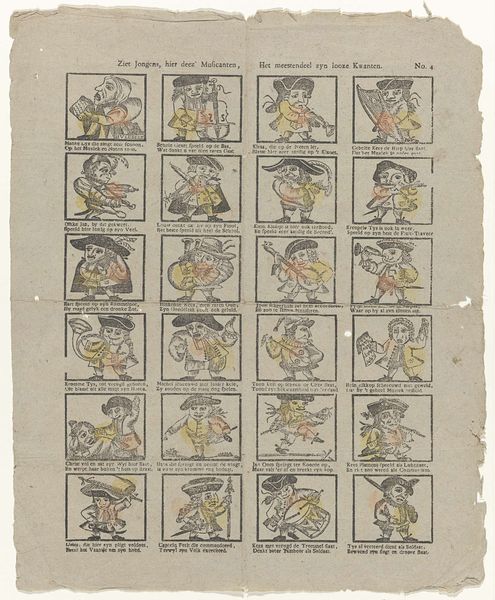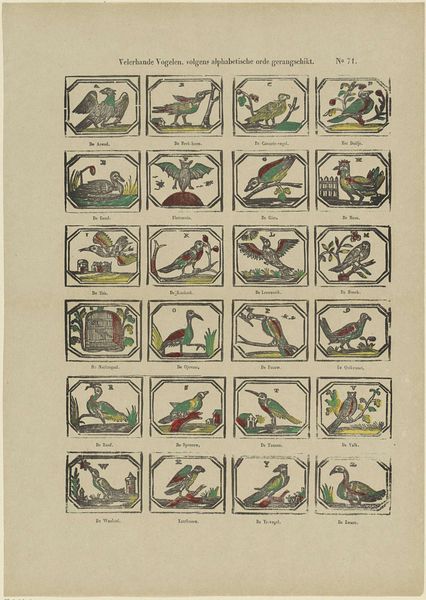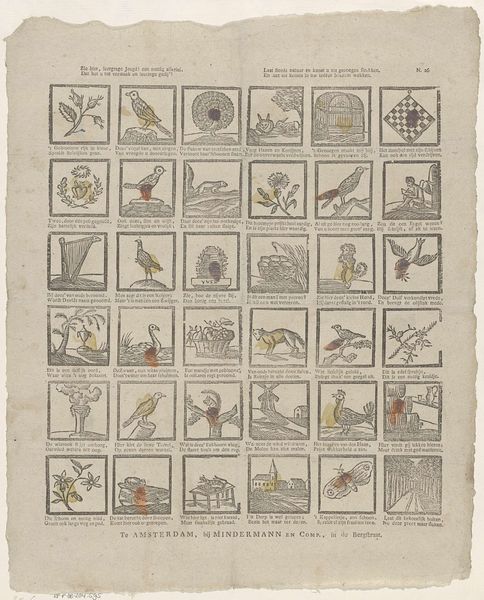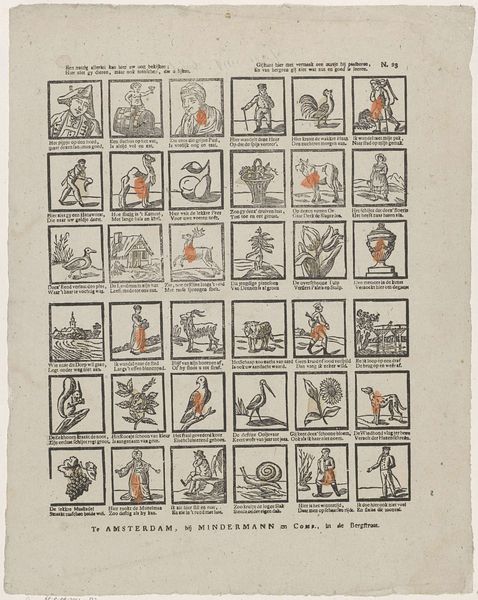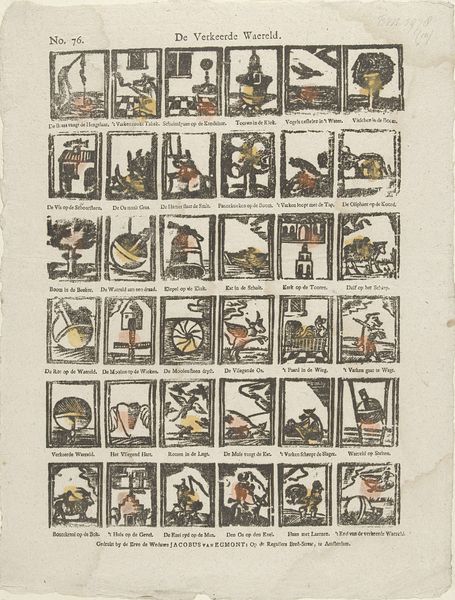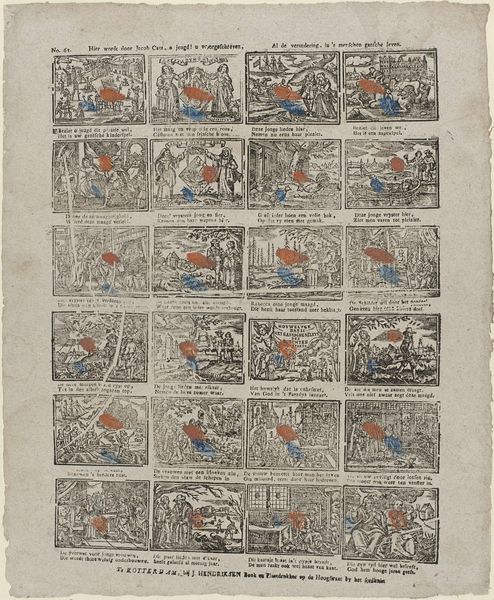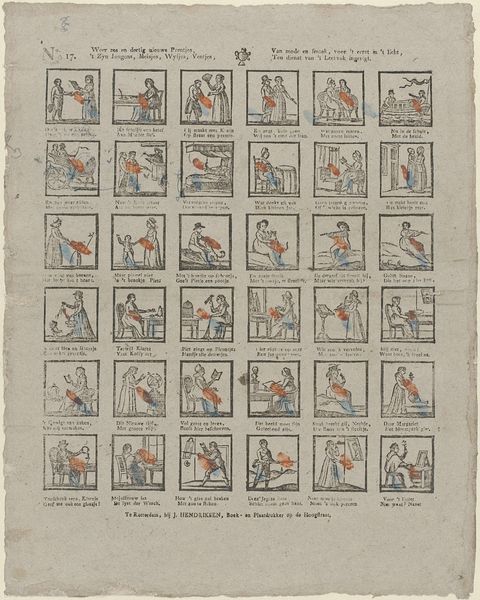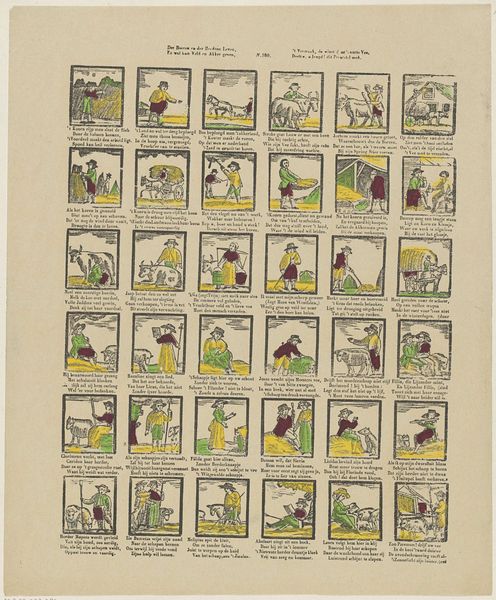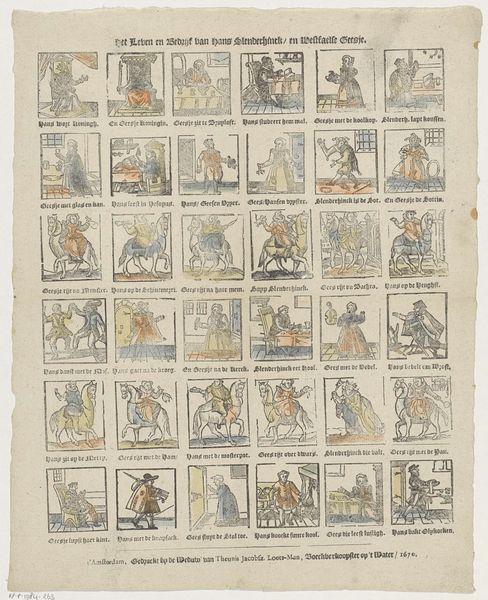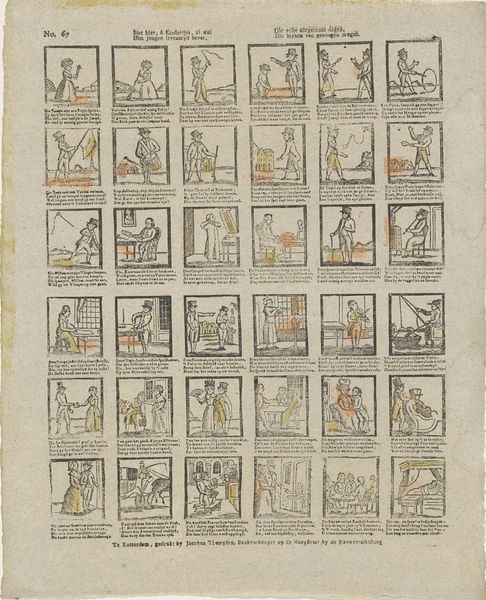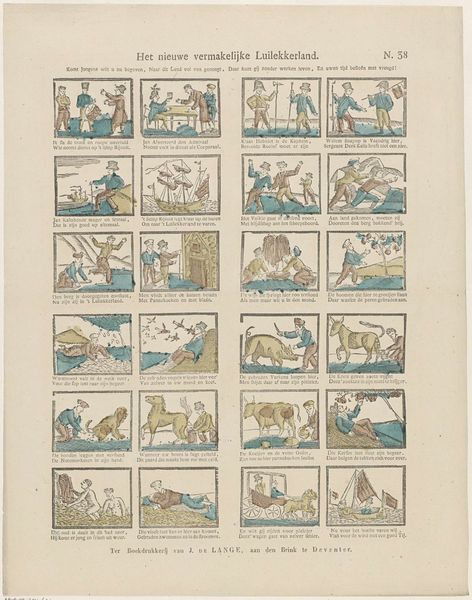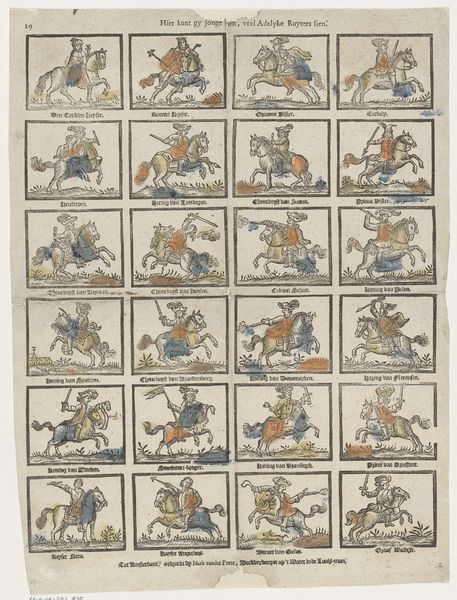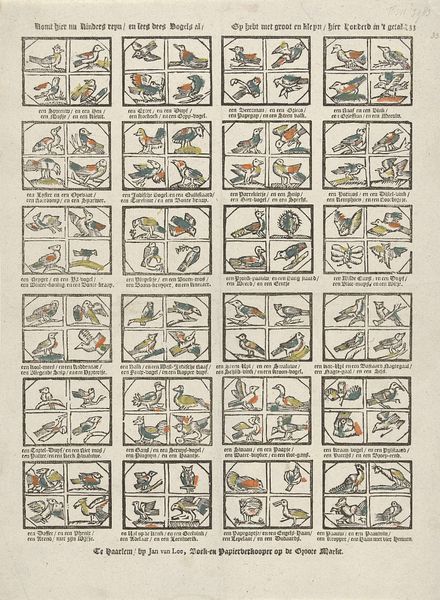
De vogeltjes die gij hier ziet / O lieve kindren! zingen niet, / Zij zijn ook mak en dra te vangen, / Gij hoeft ze in geene kooi te hangen 1856 - 1900
0:00
0:00
Dimensions: height 402 mm, width 290 mm
Copyright: Rijks Museum: Open Domain
Editor: This artwork, “De vogeltjes die gij hier ziet…”, made sometime between 1856 and 1900 by Glenisson & Zonen, consists of drawings and tempera and prints arranged as a kind of chart of birds. It gives off a sentimental, romantic feeling, doesn't it? What strikes you when you look at this? Curator: Immediately apparent is the gridded structure, an organizational principle imposing a rational order onto what would otherwise be a collection of isolated avian representations. Observe the consistent framing of each vignette, the regular repetition. Does this structure inform the viewing experience? Editor: I guess it does! Without the grids, each bird illustration would be too separate from each other, like random drawings from a sketchbook. Curator: Precisely. Further, note the interplay between the representational and the purely decorative. Each bird, while identifiable as a particular species through skillful delineation, is also situated within a floral surround, stylized and almost ornamental in its rendering. The question is, how do the decorative choices amplify or distract from our reading? Editor: It's interesting how some birds are realistically coloured, while the flowers are often in odd shades, drawing more attention to the forms. Curator: Consider the limited colour palette. Restricting the spectrum serves to unify the whole, even as the subjects are diverse. Are we meant to see these elements—the lines, colours, compositions—as harmonious or contradictory? Editor: So it is more about how the piece looks, than necessarily what it represents? Curator: Indeed. Focus less on individual birds, and observe how the structural relationship between each grid dictates the way in which we interpret these natural motifs. The totality becomes greater than the sum of its parts. Editor: I never considered looking at it like that! It shows a new approach in visual thinking and lets us question our perspective about a seemingly basic artwork. Curator: Exactly, by carefully scrutinizing its compositional qualities, one begins to unlock profound visual possibilities in this seemingly simple composition.
Comments
No comments
Be the first to comment and join the conversation on the ultimate creative platform.
